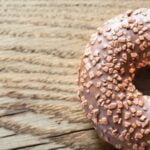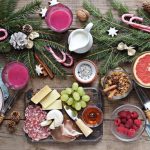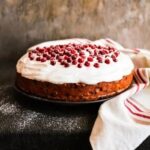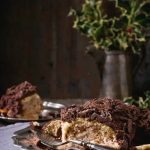Are you wondering how to decorate a cake board with buttercream to elevate the presentation of your beautiful cake? Decorating a cake board is an essential step in creating a visually appealing and professional-looking dessert.
Whether you’re a seasoned baker or just starting out, learning how to adorn the cake board with buttercream can take your cakes to the next level. In this article, we will explore the importance of decorating a cake board with buttercream, as well as provide tips and techniques for achieving stunning results.
A cake board serves as the foundation for presenting and serving your cake. Not only does it provide support for the cake itself, but it also plays a crucial role in enhancing the overall aesthetic appeal of your creation. By decorating the cake board with buttercream, you can create a cohesive and polished look that complements the design of the cake. This often overlooked detail can make a significant difference in the final presentation of your baked masterpiece.
Choosing the perfect cake board involves careful consideration of factors such as size, shape, and material. Additionally, preparing the surface of the cake board is essential for achieving a smooth and flawless result when applying buttercream frosting.
Piping techniques and adding edible embellishments are also important aspects of decorating a cake board that will be explored in this article. So let’s dive into the world of cake boards and learn how to transform them into works of art using buttercream.
Choosing the Right Cake Board
When it comes to decorating a cake board with buttercream, choosing the right cake board is crucial for both the visual appeal and structural support of the finished product. The size, shape, and material of the cake board all play significant roles in determining the overall look and stability of the decorated cake.
First and foremost, consider the size of the cake when selecting a cake board. The board should be at least 2 inches larger in diameter than the base of the cake to allow for ample space for decoration and handling. Additionally, if you plan to add embellishments or piped borders to your cake board, opting for a slightly larger size can provide more surface area for creativity.
In terms of shape, circular cake boards are ideal for round cakes, while square or rectangular boards are better suited for corresponding shaped cakes. It’s essential to ensure that the shape of the board matches that of the cake to create a cohesive and professional presentation.
Lastly, carefully consider the material of the cake board. Typically, cardboard or foam boards are popular choices due to their sturdiness and ability to hold heavy cakes. However, there are also decorative foil-covered boards available that can add an extra touch of elegance to your presentation.
Making informed decisions about these considerations will set the foundation for a successful buttercream-decorated cake board that not only looks visually appealing but also provides adequate support for your masterpiece.
| Consideration | Guidelines |
|---|---|
| Size | Select a board at least 2 inches larger in diameter than your cake |
| Shape | Choose a shape that matches that of your cake (round, square, rectangular) |
| Material | If using a heavy cake, opt for cardboard or foam boards; consider decorative foil-covered options for added elegance. |
Preparing the Cake Board
When it comes to decorating a cake board with buttercream, the first step is to properly prepare the surface for your design. This includes selecting the right size, shape, and material for your cake board, as well as ensuring it is clean and smooth before adding any decorations. In this section, we will delve into the essential steps for preparing the cake board, including cleaning, frosting, and smoothing the surface to create a perfect canvas for your buttercream designs.
Choosing the Right Cake Board
Before you can begin decorating your cake board with buttercream, you must first select the appropriate board for your project. Consider the size and shape of your cake, as well as the weight of the finished product. For heavier cakes, opt for a sturdy cake board made of thick cardboard or foam core to provide adequate support. Additionally, ensure that the board is larger than the base of your cake to allow ample space for decoration.
Cleaning and Frosting
Once you have selected the right cake board, it is crucial to clean the surface thoroughly to remove any dust or debris that could affect the final appearance of your design. Use a damp cloth or paper towel to wipe down the entire surface of the board before proceeding.
Next, apply a thin layer of buttercream frosting over the entire surface of the cake board using an offset spatula or piping bag. This layer will act as a glue to secure your cake in place and serve as a base for any additional decorations.
Smoothing Techniques
To achieve a seamless finish on your decorated cake board with buttercream, it is important to use proper smoothing techniques. After applying an initial layer of frosting, use an offset spatula or bench scraper to spread and level the buttercream across the entire surface.
If desired, you can also use a piece of parchment paper or acetate sheet to gently press and smooth out any imperfections in the frosting. Taking time with this step will result in a professional-looking base for your decorative designs.
Piping Techniques
When it comes to decorating a cake board with buttercream, piping techniques play a crucial role in achieving a flawless and professional finish. Whether you’re aiming for intricate borders or eye-catching patterns, mastering the art of piping can elevate the overall presentation of your cake. Here are some essential tips and techniques on how to decorate a cake board with buttercream using piping:
- Choose the right piping tip: The first step in creating decorative borders and patterns is selecting the appropriate piping tip. For borders, a round or star tip works well, while for intricate patterns, a petal or leaf tip can be used.
- Practice consistent pressure: Consistency in the pressure applied to the piping bag is key to achieving even and symmetrical decorations. Practice maintaining steady pressure to create smooth borders and uniform patterns.
- Experiment with different techniques: Get creative with your piping by experimenting with various techniques such as rosettes, shells, zigzags, and swirls. Each technique can add flair and personality to your cake board decoration.
Adding embellishments such as edible flowers, chocolate shavings, or sprinkles can further enhance the visual appeal of your decorated cake board. Whether you’re decorating for a special occasion or simply adding a touch of elegance to your baked creations, mastering piping techniques will allow you to showcase your creativity and skill in cake decorating.
In addition to creating visually appealing borders and patterns, it’s essential to ensure that the buttercream is well-mixed and at the right consistency for piping. If you find that the buttercream is too runny or too stiff, adjust its consistency by adding small amounts of powdered sugar or milk until it reaches the desired texture.
With these tips and techniques in mind, you can transform a simple cake board into an exquisite canvas for your delicious confections. Mastering the art of piping with buttercream will not only elevate the presentation of your cakes but also showcase your dedication to attention to detail and precision in decorating. Whether you’re a beginner or an experienced baker, practicing different piping techniques will undoubtedly add an extra layer of artistry to your cake boards.
By incorporating these methods into your cake decorating routine, you can take your creations from ordinary to extraordinary while impressing your guests with stunning presentations. The possibilities are endless when it comes to using buttercream as a medium for creating beautiful designs on cake boards – so don’t be afraid to experiment and unleash your creativity.
Adding Embellishments
Decorating a cake board with buttercream opens up endless opportunities for creativity. Once the base layer of buttercream has been applied and smoothed, it’s time to start adding embellishments to make the cake board truly stand out. One popular option is to use edible decorations such as fondant or gum paste flowers, leaves, or other intricate designs. These can be made in advance and carefully placed on the cake board for a personalized touch.
Another fun way to enhance a cake board is by incorporating sprinkles. Whether you opt for rainbow jimmies, nonpareils, or shimmering sugar crystals, sprinkles can add a pop of color and texture to the cake board. To achieve a precise arrangement of sprinkles, start by gently pressing them into the buttercream with clean fingers or a sprinkle shaker.
For an extra touch of glamour, consider using edible glitter to give the cake board a bit of sparkle. From subtle shimmer to bold metallic effects, edible glitter comes in a variety of colors and sizes to suit any theme or occasion. To apply edible glitter to the buttercream, simply dust it over the surface with a clean brush or sprinkle it on with your fingertips for a dazzling finish.
By incorporating these embellishments onto the decorated cake board with buttercream, you can elevate the presentation of your cakes while also adding personal flair and creativity. Whether you’re aiming for elegance, whimsy, or something in between, there are countless ways to make your cake boards uniquely spectacular.
Tips for a Professional Finish
Decorating a cake board with buttercream is not only a way to showcase your creativity and attention to detail, but it also serves a practical purpose. A well-decorated cake board provides a professional finish to your cake presentation and adds to the overall aesthetic appeal. Achieving smooth edges and clean lines on your cake board requires the right techniques and attention to detail.
To start, it’s important to ensure that the buttercream used for decorating the cake board is at the right consistency. If the buttercream is too stiff, it will be difficult to spread smoothly, while buttercream that is too soft may cause the edges to appear messy. The ideal consistency is one that holds its shape but is also easily spreadable.
When applying the buttercream to the cake board, use an offset spatula or bench scraper for even distribution. Hold the tool at a 45-degree angle as you smooth out the buttercream, working from the center of the cake board outwards. This technique helps create clean and even edges around the perimeter of the board.
Another tip for achieving a professional finish is to chill the buttercream-coated cake board in the refrigerator for 10-15 minutes before adding any additional decorations or placing a frosted cake on top. This step helps set the buttercream and prevent any smudging or smearing when handling the decorated board.
In addition, paying attention to small details such as ensuring that there are no crumbs in the buttercream and using clean tools throughout the process can contribute to a polished result. Taking these extra steps will elevate your cake presentation and leave a lasting impression on anyone who sees it.
| Tip | Description |
|---|---|
| Buttercream Consistency | The ideal consistency for achieving smooth edges and clean lines |
| Tool Choice | Using an offset spatula or bench scraper for even distribution of buttercream |
| Chilling Process | Chilling in refrigerator before adding decorations or placing frosted cake on top |
Presentation
When it comes to presenting a beautifully decorated cake, the final touch is often the cake board. Decorating the cake board with buttercream not only enhances the overall presentation but also adds an extra element of creativity and personalization to your baked creation. Whether you are a professional baker or a home baker looking to showcase your skills, learning how to decorate a cake board with buttercream is a valuable skill that can take your cakes to the next level.
Here are some tips and techniques on how to decorate a cake board with buttercream:
- Clean the cake board: Before decorating, make sure to clean the cake board thoroughly to ensure that there are no crumbs or debris. This will provide a clean canvas for your buttercream decorations.
- Choose complementary colors: Select buttercream colors that complement the overall theme and color scheme of your cake. Whether you choose to match the frosting on the cake or create a contrasting design, harmonizing colors will tie everything together beautifully.
- Use piping techniques: Utilize piping tips and techniques to create decorative borders and patterns on the cake board. You can use different piping tips to create different designs such as swirls, dots, shells, or rosettes.
- Add embellishments: Consider adding edible decorations such as fondant flowers, sprinkles, or edible glitter to further enhance the design of the cake board. These small details can make a big impact on the overall presentation of your finished cake.
By incorporating these techniques into your cake board decoration process, you can elevate the presentation of your cakes and impress anyone who sees-and tastes-your creations. Remember that practice makes perfect, so don’t be afraid to experiment with different designs and styles until you find what works best for you.
Troubleshooting
Decorating a cake board with buttercream can be a fun and creative way to enhance the presentation of your cake. However, there are common mistakes that can occur during the decorating process. Knowing how to identify and fix these issues can help you achieve a perfect result.
One common mistake when decorating a cake board with buttercream is uneven frosting. This can happen if the frosting is too thick or if it has not been smoothed out properly. To fix this issue, you can use a small offset spatula to gently spread the frosting in an even layer, ensuring that it covers the entire surface of the cake board. You can also use a bench scraper to smooth out the frosting for a more professional finish.
Another common problem is air bubbles in the buttercream. These can create an uneven texture on the cake board and detract from its overall appearance. To fix this issue, you can use a toothpick or small needle to gently poke any air bubbles in the frosting. Then, use your offset spatula to smooth out the frosting and eliminate any remaining bubbles.
Additionally, it’s important to pay attention to any smudges or fingerprints that may appear on the buttercream as you are decorating the cake board. If you notice any imperfections, you can use a clean paper towel or Viva-brand paper towel (which has no texture) to gently dab at the affected areas and remove any smudges. This will help ensure that your cake board looks clean and professional.
By being aware of these common mistakes and knowing how to address them, you can ensure that your decorated cake board looks flawless and enhances the overall presentation of your cake. Whether you are creating a simple design or something more intricate, troubleshooting these issues will help you achieve a perfect result when decorating your cake board with buttercream.
Conclusion
In conclusion, decorating a cake board with buttercream is an essential step in elevating the overall presentation of your cake. Not only does it provide a clean and professional appearance, but it also adds another layer of creativity and artistry to your baked masterpiece. The buttercream not only serves as a functional element to secure the cake in place, but it also allows you to showcase your piping skills and design aesthetic.
When choosing the right cake board, it’s important to consider the size, shape, and material that will best complement your specific cake design. Whether you opt for a traditional round board or get creative with custom shapes, the key is to ensure that it can adequately support and display your cake. Additionally, preparing the cake board by cleaning, frosting, and smoothing the surface is crucial in creating a flawless canvas for your decorative elements.
By mastering piping techniques and incorporating edible embellishments, you can create stunning borders, patterns, and textures on the cake board. Edible decorations such as flowers, sprinkles, or edible glitter can further enhance the overall presentation and tie into the theme of your cake.
Remember to pay attention to achieving smooth edges and clean lines for a professional finish that truly wows your audience when you present the finished cake on its beautifully decorated board. With these tips in mind, you’ll be well-equipped to embark on future projects and continue exploring new ideas for decorating cake boards with buttercream.
Frequently Asked Questions
Can You Put Buttercream on a Cake Board?
It is not recommended to put buttercream directly on a cake board as it can make the board soggy and affect the stability of the cake. It’s best to use a thicker covering such as fondant or royal icing.
How Do You Get Icing to Stick to a Cake Board?
To get icing to stick to a cake board, you can use a thin layer of piping gel or apricot glaze. Simply brush a small amount onto the board where you want the icing to adhere, and then gently place the iced cake on top.
What Do You Cover a Cake Board With?
Cake boards are typically covered with decorative or food-safe materials such as foil, parchment paper, or wrapping paper. Some bakers also use fondant or royal icing to create a smooth and elegant covering for the cake board that complements the overall design of the cake.

Welcome to my blog about home and family. This blog is a place where I will share my thoughts, ideas, and experiences related to these important topics. I am a stay-at-home mom with two young children. I hope you enjoy reading it! and may find some helpful tips and ideas that will make your home and family life even better!





